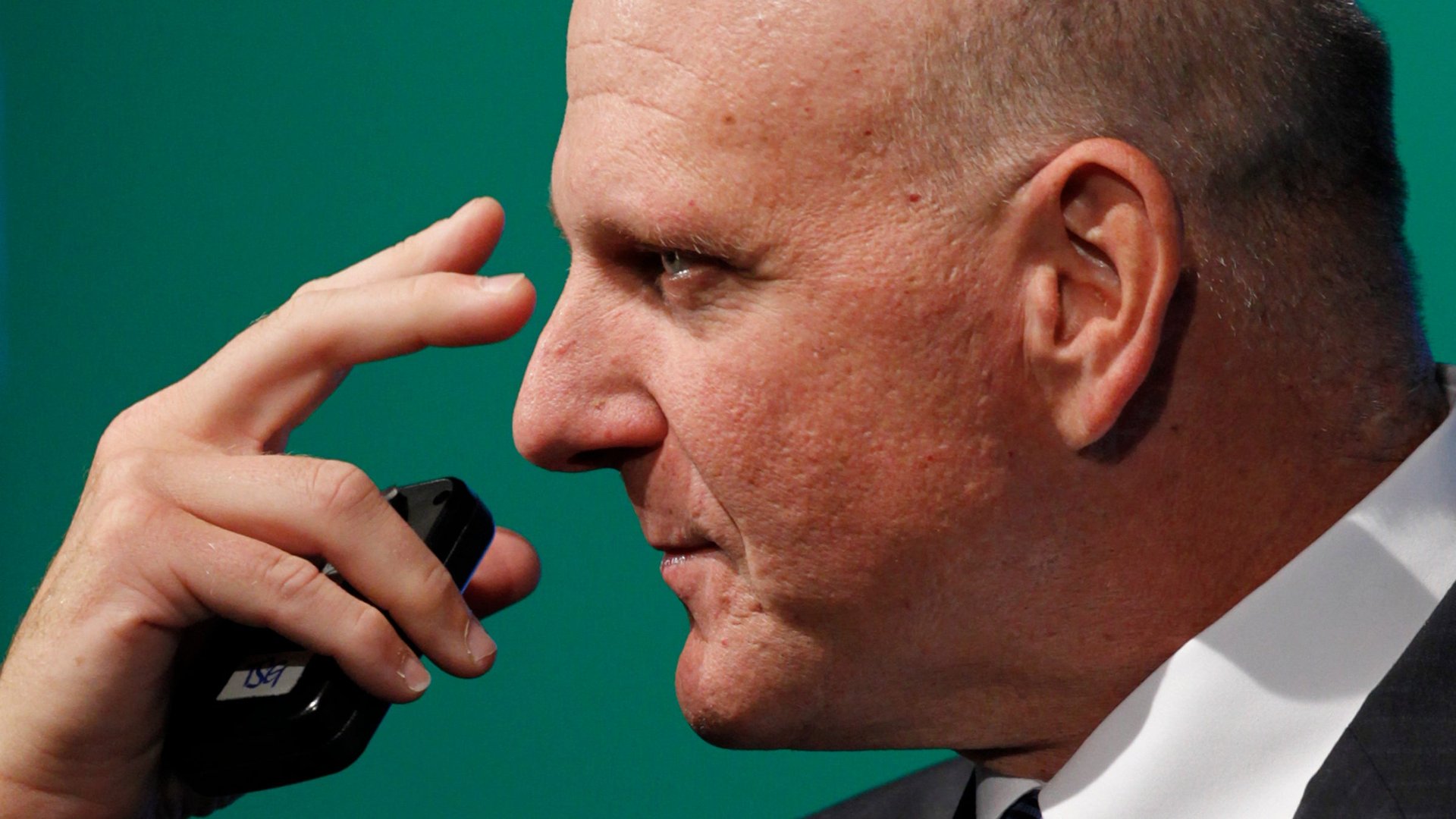Microsoft caves in and cancels its questionable employee-ranking system
This article has been corrected.


This article has been corrected.
Microsoft is finally canning its much-maligned system for ranking employees.
The move is a significant shift and follows CEO Steve Ballmer’s August announcement that he would step down within the following 12 months—it was during his tenure that the poisonous ranking system took flight. Under “stack-ranking,” as the management program has been called, managers had to rank all of the people who reported to them. Those rankings were used to make bonus and firing decisions.
Microsoft’s executive vice president of human resources Lisa Brummel informed the company via email on Tuesday (Nov. 12), reports the Wall Street Journal. Here are the key elements, as laid out by Brummel’s email (emphasis is ours):
More emphasis on teamwork and collaboration. We’re getting more specific about how we think about successful performance and are focusing on three elements—not just the work you do on your own, but also how you leverage input and ideas from others, and what you contribute to others’ success—and how they add up to greater business impact.
More emphasis on employee growth and development. Through a process called “Connects” we are optimizing for more timely feedback and meaningful discussions to help employees learn in the moment, grow and drive great results. These will be timed based on the rhythm of each part of our business, introducing more flexibility in how and when we discuss performance and development rather than following one timeline for the whole company. Our business cycles have accelerated and our teams operate on different schedules, and the new approach will accommodate that.
No more curve. We will continue to invest in a generous rewards budget, but there will no longer be a pre-determined targeted distribution. Managers and leaders will have flexibility to allocate rewards in the manner that best reflects the performance of their teams and individuals, as long as they stay within their compensation budget.
No more ratings. This will let us focus on what matters—having a deeper understanding of the impact we’ve made and our opportunities to grow and improve.
Microsoft’s unpopular employee-ranking system has been contentious, especially within the company. Interviews with Microsoft employees undertaken as part of a Vanity Fair feature on the company’s downfall revealed employee outrage about the program being predatory and counterproductive.
Every current and former Microsoft employee I interviewed—every one—cited stack ranking as the most destructive process inside of Microsoft, something that drove out untold numbers of employees. The system—also referred to as “the performance model,” “the bell curve,” or just “the employee review”—has, with certain variations over the years, worked like this: every unit was forced to declare a certain percentage of employees as top performers, then good performers, then average, then below average, then poor.
While Microsoft has certainly become the face of such a system, the company wasn’t the first to implement one. General Electric’s Jack Welch not only used, but regularly touted, his own version, which was known as “rank and yank.” Microsoft’s policy, however, stands in stark contrast to the likes of Google and Apple, which have foregone competition-inducing programs to promote teamwork instead.
Correction (Nov. 12): Correction: A previous version of this post incorrectly referred to Steve Ballmer as Microsoft’s former CEO. Ballmer announced in August that he would step down in the following 12 months.